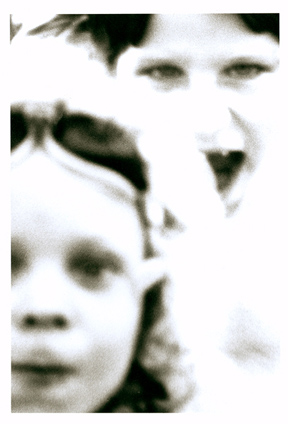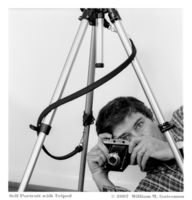The Emotional Response
November 1, 2007 Art Criticism, Creating ArtPaul Indigo, in his blog Beyond the Obvious has stated that: “If you look at the great masters of photography and their images, many of which have become iconic, you see that there is a distinct gap between text book perfection and what they’ve produced. Most great pictures that touch our hearts have technical flaws. . . . But it doesn’t matter because there’s so much emotion and power in their images.”
 The image in this post, Boys at Play, is a scan of a black and white photograph I created in a traditional wet darkroom. The negative for this image contains much more visual information than the print, however I used an Ilford Mutigrade filter on my enlarger which had the effect of creating the more posterized image you see here. I suppose one might be able to create a similar effect using the posterize feature in photoshop, but I don’t know if that would yield the same result with this image as I obtained using traditional photo processing techniques.
The image in this post, Boys at Play, is a scan of a black and white photograph I created in a traditional wet darkroom. The negative for this image contains much more visual information than the print, however I used an Ilford Mutigrade filter on my enlarger which had the effect of creating the more posterized image you see here. I suppose one might be able to create a similar effect using the posterize feature in photoshop, but I don’t know if that would yield the same result with this image as I obtained using traditional photo processing techniques.
Given the posterized nature of this picture, one might argue that it is not a technically perfect representation of the subject. Nevertheless, for me, it is an effective photograph because, without fail, I have an intense emotional reaction every time I view Boys at Play.
The same can be said about “Robert Capa’s shots of the Normandy landing”, to give but one of the examples pointed out by Paul Indigo. Capa’s photograph of a soldier wading in the ocean towards the shore is blurry and grainy and by no means a technically perfect image, but it is one to which I have a strong emotional response. For me, this photograph successfully captures what it must have been like to be that soldier in that circumstance.
With Boys at Play my response is something akin to dread. But, being the father of two sons, I know that boys (and their dads) often engage in rough play, play that to an outside observer may appear to be something more sinister. I believe that Boys at Play is a successful image insofar as it captures the sinister-looking nature of the interaction between two boys.
You may view a larger version of Boys at Play by logging on to the Surreal Portraits Gallery at my online Photo Gallery at www.wmgphoto.com by clicking –here–
To view Paul Indigo’s blog post Great images may be techically flawed, click –here–
Robert Capa’s most famous Normandy landing photograph can be viewed –here–
________________________________________
Paul Indigo comments:
“Interesting article and I appreciate the way you share your personal feelings about Boys at Play. The emotion in the image hits you straight away and photography is after all about communication, not slavishly following a set of dogmatic rules. I suppose the idea that you and I are trying to get across can be summed up in a simple question: ‘Do you want to be the best rule follower in the world or the best visual communicator?'”

